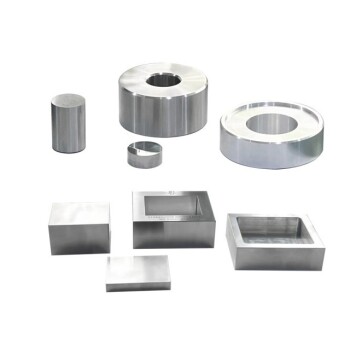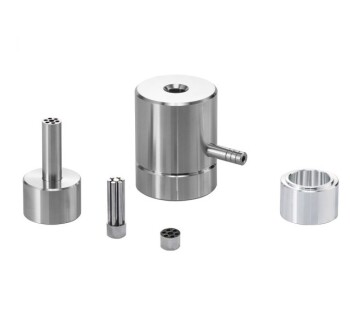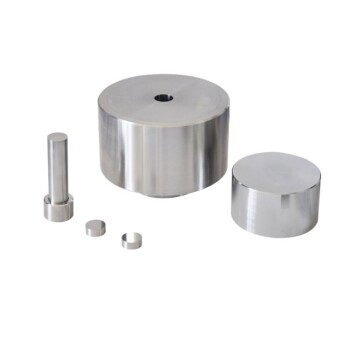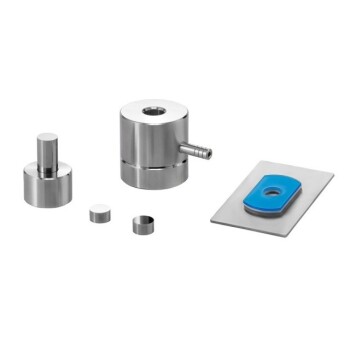In high-volume manufacturing, hot pressing becomes cost-effective by converting a high initial investment into significant long-term operational savings. This economic efficiency is driven by the process's ability to produce high-density, near-net-shape parts with minimal material waste and a drastic reduction in the need for costly secondary finishing operations.
The high initial capital outlay for hot pressing is a classic economy of scale investment. While prohibitive for small runs, its ability to consolidate materials and form complex parts in a single step dramatically lowers the per-unit cost as production volume increases, making it a strategic choice for mass production.
The Core Principle: Amortizing High Initial Costs
Understanding the Capital Investment
Hot pressing machinery, including the hydraulic press, heating systems, and control units, represents a significant upfront capital expenditure.
The tooling and dies must be engineered from robust materials capable of withstanding extreme temperatures and pressures, further adding to the initial setup cost.
The Power of Economies of Scale
This high initial cost is the primary reason hot pressing is not viable for small-batch or prototype production.
However, in large-scale production, this fixed cost is distributed across hundreds of thousands or even millions of units. As the volume increases, the impact of the initial investment on each individual part's cost becomes negligible.
How Hot Pressing Drives Down Per-Unit Costs
Achieving Near-Net-Shape Parts
Hot pressing excels at forming powdered materials or preforms into a "near-net shape," meaning the part emerges from the press very close to its final, required dimensions.
This single-step consolidation and shaping process is the foundation of its economic advantage in high-volume scenarios.
Drastic Reduction in Post-Processing
Because parts are produced at or near their final shape, the need for subsequent manufacturing steps is minimized or eliminated entirely.
This directly translates into major cost savings by reducing or removing expensive and time-consuming subtractive processes like CNC machining, grinding, or drilling. This saves on labor, machine time, energy, and consumable tooling.
Superior Material Efficiency
Unlike subtractive manufacturing, where a large portion of a raw material block is cut away as waste (scrap), hot pressing is an additive or formative process.
It consolidates nearly 100% of the initial powder or preform material into the final component. This dramatic reduction in material waste is a powerful cost-saving factor, especially when working with expensive or advanced materials.
Enhanced Material Properties
The combination of high temperature and pressure produces parts with superior density and mechanical properties.
This can sometimes allow for part designs that use less material to achieve the required strength and performance specifications, providing another avenue for cost reduction.
Understanding the Trade-offs and Limitations
The High Initial Investment Barrier
The most significant limitation is the high capital cost for equipment and tooling. This makes the process fundamentally unsuited for projects without a clear path to high-volume production to ensure a return on investment.
Potentially Slower Cycle Times
Compared to processes like metal injection molding or conventional stamping, the heating, pressing, and cooling stages of hot pressing can result in longer cycle times per part.
However, this is often offset by the complete elimination of downstream manufacturing steps. The total production time, from raw material to finished part, can still be shorter and more cost-effective.
Tooling Design and Wear
The design and fabrication of high-endurance tooling is complex and costly. Furthermore, the extreme operating conditions mean that dies will eventually wear and require replacement, which must be factored into the long-term operational budget.
Making the Right Choice for Your Production Goals
Evaluating hot pressing requires looking beyond the initial invoice for the equipment and analyzing the total cost of manufacturing per part over the lifetime of the product.
- If your primary focus is rapid prototyping or low-volume runs: Hot pressing is not suitable due to the high setup costs; consider alternatives like CNC machining or additive manufacturing (3D printing).
- If your primary focus is mass-producing complex, high-performance components: Hot pressing is an excellent candidate when the long-term savings on materials and labor justify the initial capital investment.
- If your primary focus is cost reduction on an existing high-volume part: Evaluate a switch to hot pressing if your current process involves significant material waste or requires extensive secondary machining.
By understanding the relationship between upfront investment and per-unit operational savings, you can confidently determine if hot pressing aligns with your long-term production strategy.
Summary Table:
| Factor | Impact on Cost-Effectiveness |
|---|---|
| High Initial Investment | Amortized over large volumes, lowering per-unit cost |
| Near-Net-Shape Parts | Reduces need for secondary finishing, saving time and labor |
| Material Efficiency | Minimizes waste, especially with expensive materials |
| Enhanced Properties | Allows for lighter designs, further cutting material use |
Ready to optimize your large-scale production with cost-effective hot pressing solutions? KINTEK specializes in lab press machines, including automatic lab presses, isostatic presses, and heated lab presses, designed to serve your laboratory needs by delivering high-density, near-net-shape parts with minimal waste. Contact us today via our contact form to discuss how our equipment can drive down your per-unit costs and enhance efficiency!
Visual Guide
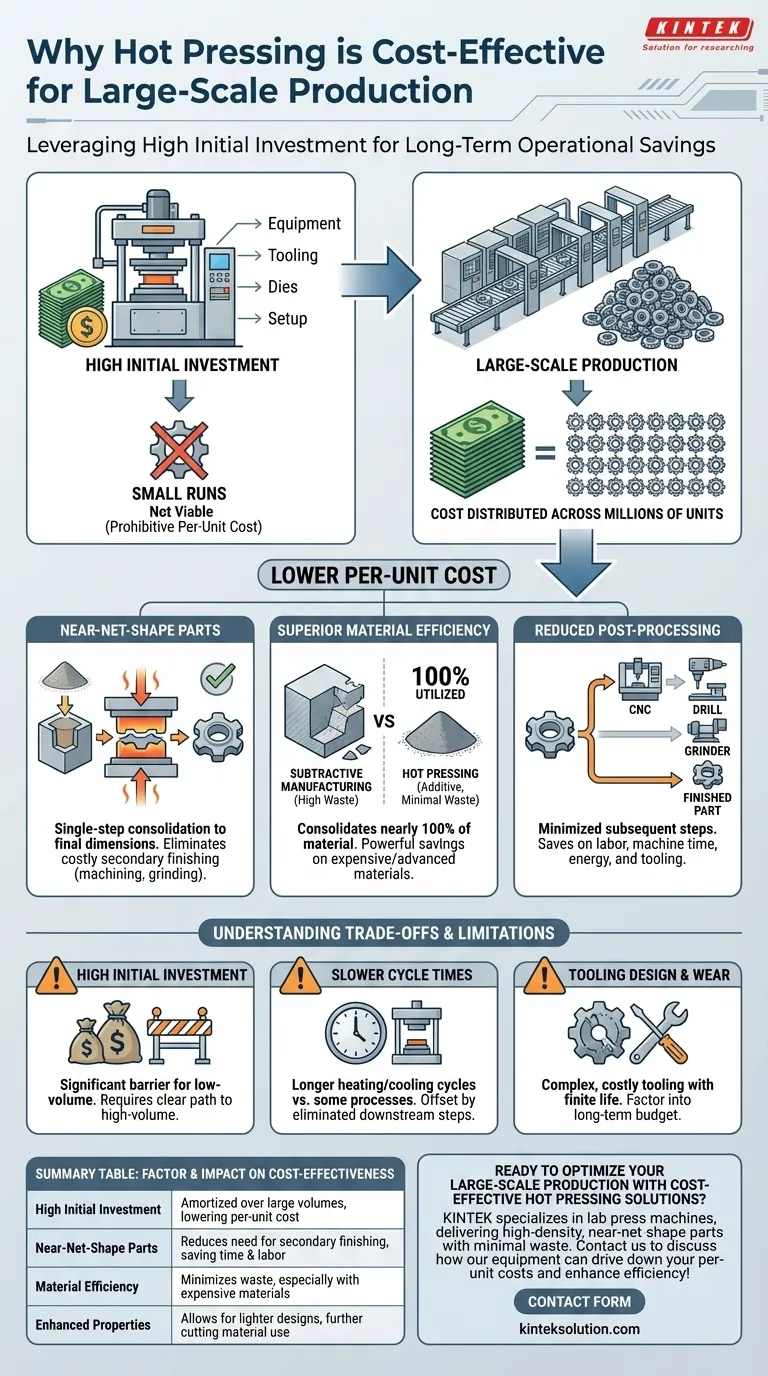
Related Products
- Automatic High Temperature Heated Hydraulic Press Machine with Heated Plates for Lab
- Lab Heat Press Special Mold
- Laboratory Manual Heated Hydraulic Press Machine with Hot Plates
- Automatic Heated Hydraulic Press Machine with Hot Plates for Laboratory
- Manual Heated Hydraulic Lab Press with Integrated Hot Plates Hydraulic Press Machine
People Also Ask
- What role does a heated hydraulic press play in powder compaction? Achieve Precise Material Control for Labs
- How are heated hydraulic presses applied in the electronics and energy sectors? Unlock Precision Manufacturing for High-Tech Components
- What are the applications of hydraulic heat presses in material testing and research? Enhance Precision and Reliability in Your Lab
- Why is a heated hydraulic press considered a critical tool in research and production environments? Unlock Precision and Efficiency in Material Processing
- What is a heated hydraulic press and what are its main components? Discover Its Power for Material Processing

